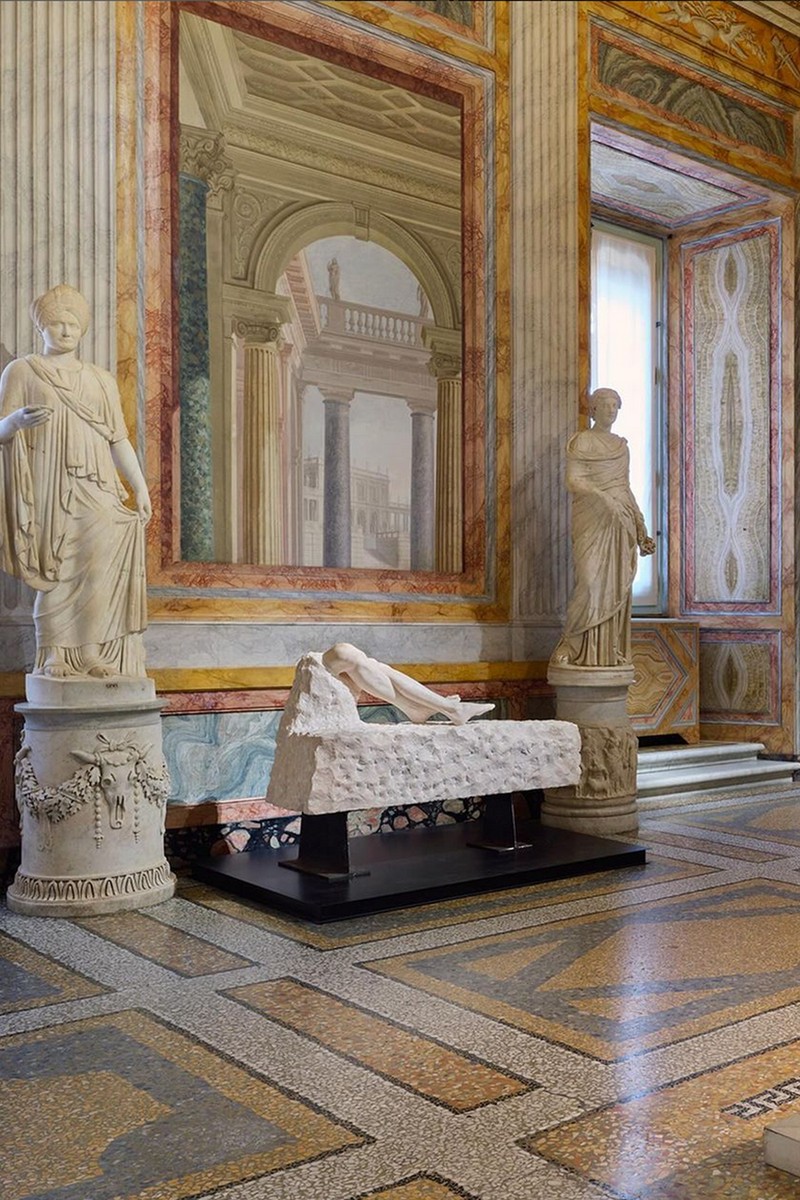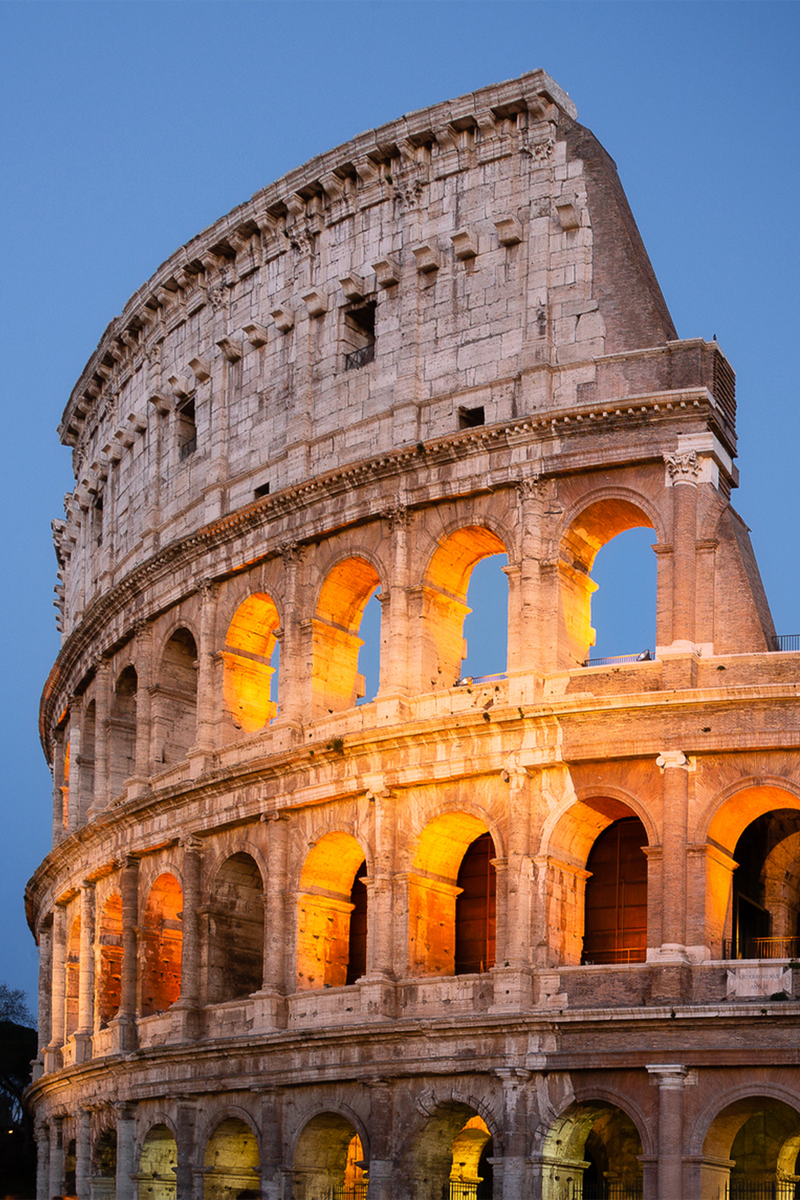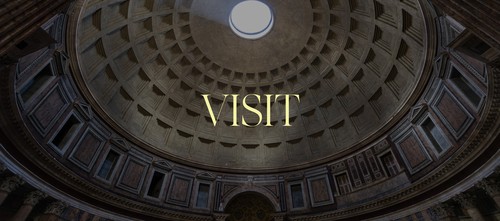
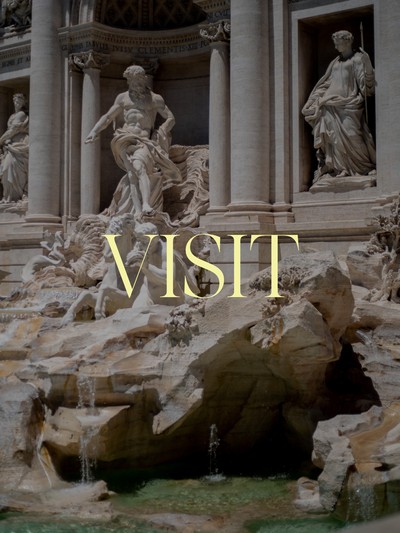
The Best Places To Visit In Rome
Vatican
A city break within a city break, the Vatican needs time. The Catholic Church’s global HQ is a centre of power, but it is also a place of awe. St Peter’s Basilica is the largest church in the world and the crowning achievement of the Renaissance. Michelangelo had a hand in its design and he is also, of course, the divine talent behind the Sistine Chapel. To reach his masterpiece, you need a ticket to the Vatican Museums, but that is no hardship – their walls are lined with works of genius by Leonardo, Raphael and more.
Visit MUSEIVATICANI.VA
Colosseum
You’ve probably heard of this place, but the full glory of the Colosseum is only revealed to those who spend time within – and beneath – that famous curved exterior. An underground tour is an add-on to basic entry, but it’ll give you a glimpse of what gladiators might have felt as they prepared to enter the arena, and how sea battles were once staged here. Within the wider Archaeological Park of the Colosseum, there is another subterranean treat. Nero, the emperor who fiddled as Rome burned, did manage to build himself the Domus Aurea, a lavish palace that can now be seen only by atmospheric guided tour. The more visible parts of the park – the Palatine and the Roman Forum – are also worth visiting and can be booked in various combinations with the Colosseum itself.
Visit COLOSSEO.IT
Pantheon
The Pantheon is in our personal pantheon of jaw-dropping buildings. Not just because it’s one of the best preserved ancient buildings in all of Rome, but also because – almost 2,000 years after it was built – still no one knows how Emperor Hadrian’s builders did it. That the world’s largest poured-concrete dome is still standing is a mystery worth craning your neck upwards for.
Visit PANTHEONROMA.COM
Villa Borghese
Walk through its gardens to reach Villa Borghese on a sunny day and you might lament having committed to an indoor activity. But the gardens will be there when you emerge and anyway, once you’re inside, all regret will dissolve. Galleria Borghese houses what might be the greatest collection of sculpture we’ve ever seen. The Baroque genius Bernini was once commissioned to fill its rooms, and he delivered a series of masterpieces – his Apollo and Daphne is surely a high point for all of art. Anyone on the trail of Caravaggio (more on him below) should know that he too is well represented here. If you are walking back into the Centro Storico, the 16th-century gardens of the Villa Medici are worthy of a guided tour.
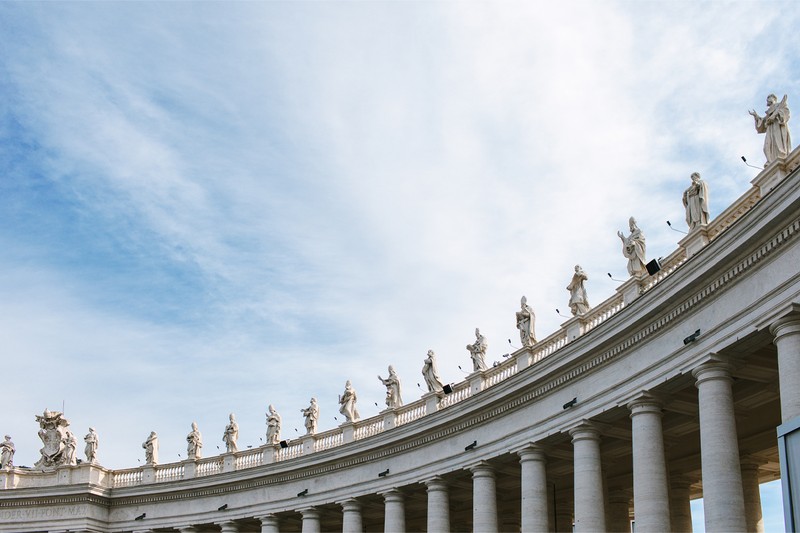
Galleria Doria Pamphilj
The art collection of the Doria Pamphilj family is actually the collection of four prominent Roman families, brought together by marriage. Between them, they’ve had popes and princes in their ranks. The art is appropriately glittering – Caravaggio, Raphael, Titian and Velazquez are all here – and so too is the setting. Gilded halls lead you towards a remarkable gallery of mirrors.
Visit DORIAPAMPHILJ.IT
Capitoline Museums
The Capitoline Museums occupy a set of palazzos that sit around a piazza designed by Michelangelo. It’s an elegant setup into which invaluable artefacts of ancient Roman have been poured. The highlights are many: the bronze statue of emperor Marcus Aurelius on his horse is a majestic tribute to the great stoic; another bronze of Rome’s founders Romulus and Remus being nursed by a she-wolf has become the city’s emblem. Overflow from these historic museums has been creatively housed in Centrale Montemartini, an old power station over in Ostiense where you can now see classical sculptures in a remarkable industrial setting.
Visit MUSEICAPITOLINI.ORG
MAXXI
MAXXI has been bringing new life to Rome’s Flaminio neighbourhood ever since it opened in 2020 and immediately won the Stirling prize for architecture. Zaha Hadid’s building catches the eye with its jagged angles, and there’s more to occupy the mind inside. Its exhibitions on modern and contemporary art go deep, shining new light on Italian artists and global figures alike. Riccardo Dalisi was the name we took away from our last visit.
Visit MAXXI.ART
MACRO
This contemporary art museum occupies an old Peroni beer factory in the Salario neighbourhood. In a refreshing turn away from the ancient history that prevails elsewhere in Rome, the focus here is on art since the 1960s. Photography and installation art tend to be well represented by the rotating exhibitions which – until the end of 2024 at least – are all designed to have some sort of revolutionary impact.
Visit MUSEOMACRO.IT
/https%3A%2F%2Fsheerluxe.com%2Fsites%2Fsheerluxe%2Ffiles%2Farticles%2F2024%2F09%2Fsl060924-rome-city-guide-visit-2-new.png?itok=1PR_f6AJ)
Keats-Shelley House
You can’t sit on them anymore, but you’ll be heading up or down the Spanish Steps at some point. At the bottom, next to the Acqua di Parma store, is the Keats-Shelley House. This is where the young Romantic poets spent a few months living in Rome before Keats’ death. In the middle of a busy city, it’s a transportive place to consider a couple of short lives well lived. If you too are seduced by the Romantics, you can also visit Keats’ grave in the city’s Non-Catholic Cemetery, close to the Piramide metro station.
Visit KSH.ROMA.IT
Testaccio
A little south of Rome’s tourist heartland, Testaccio is a historic neighbourhood worth exploring one day. At its centre is Monte Testaccio, a grassy hill created by ancient Romans dumping their broken pottery in the same place for hundreds of years. Around and about, there’s Testaccio market, where locals buy their fresh produce and you can grab a classic Roman sandwich at Mordi e Vai. Rome’s only pyramid is here too, next to the cemetery where Keats is buried, but the places that bring this old slaughterhouse district to life are the bars, bakeries and tavernas that dot its streets. Take a wander, there are no wrong turnings here.
Trastevere
Across the river from the Centro Storico, the cobbled streets of Trastevere were once an enclave of artisans. Their secret is out now, and a younger crowd gathers here each night to explore its lively bar scene. But this is Rome, so you can still find the old history among the changes. Bar San Calisto has been around since the 60s, Ai Marmi has been turning out great Roman-style pizzas for longer than that, and there’s a famous flea market on Sundays. Handsome Villa Farnesina is the local oasis of high culture.
Caravaggio
He’s not the biggest name in Renaissance art, but we think Caravaggio’s paintings are the most striking. Maybe it’s his reputation as a brawler, a dueller and a libertine that has led him to be a little overlooked but, once seen, his daring, dramatically lit work is not forgotten. Rome is a great place to find out what he could do. His pieces are in some of the famous museums above, but they are also in lesser-known galleries like Palazzo Barberini and churches including San Luigi des Francesci, Basilica di Sant’Agostino and Santa Maria del Popolo. Follow the Caravaggios and you will see inside some of Rome’s most wonderful buildings, and get up close to some of the world’s greatest paintings. Pro tip: carry a few euros in change with you. They’re needed to light the walls in some of the churches – while everyone else is looking at each other, you can feed the slot and be a hero.
BACK TO: Main Page | JUMP TO: The Best Places To Eat In Rome
DISCLAIMER: We endeavour to always credit the correct original source of every image we use. If you think a credit may be incorrect, please contact us at info@sheerluxe.com.
